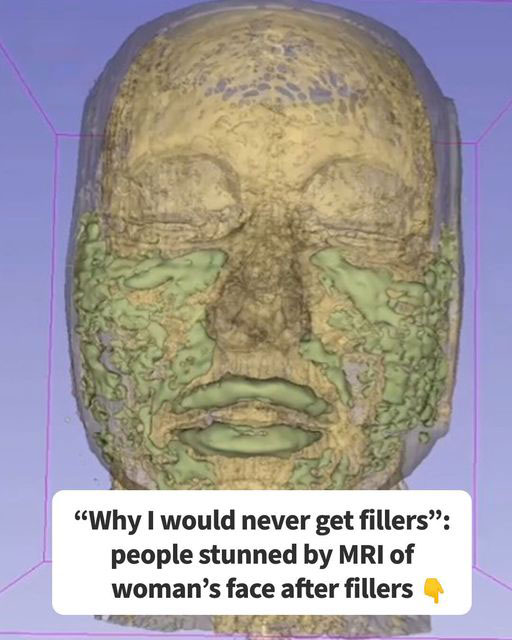A viral video from oculoplastic surgeon Dr. Kami Parsa has revealed startling results from an MRI scan of a 33-year-old woman’s face. The scan exposed how dermal fillers, intended to enhance facial contours, had migrated and doubled over several years, leading to widespread shock and concern among viewers.1
The Viral MRI Revelation

Dr. Kami Parsa, based in Beverly Hills, shared the MRI footage on his TikTok page. The scan showed green spots across the woman’s face, indicating the presence of hyaluronic acid fillers that had migrated and expanded significantly. Despite only being injected with 12 CC of dermal fillers over six years, the volumetric analysis showed an astonishing total of 28 CC, more than twice the amount originally injected.
Understanding Dermal Fillers

Hyaluronic acid fillers are popular for facial rejuvenation, offering temporary solutions to smooth lines, restore volume, and enhance contours. Typically, these dermal fillers last between 6 to 18 months. However, Dr. Parsa’s video suggests that the effects can persist much longer and may lead to unexpected results.
Viewer Reactions and Concerns

The video, which has amassed millions of views, sparked widespread concern and discussion. Many viewers shared their own experiences, noting that their fillers had also lasted far longer than expected. Comments ranged from shock to validation, with one user stating, “Had my lips done 8 years ago. It still hasn’t gone away”.
The Science Behind the Migration

Dr. Parsa explained that dermal fillers are hydrophilic, meaning they attract water and can cause tissue expansion. This property contributes to the fillers‘ persistence and migration over time. “What this shows us is that hyaluronic acid fillers are hydrophilic. That means they love water and they also cause tissue expansion,” Dr. Parsa explained in his video.
Implications for Cosmetic Procedures

The MRI results raise important questions about the long-term effects of hyaluronic acid fillers and the information provided to patients. While the dermal fillers are marketed as temporary, the findings suggest a need for more comprehensive discussions about potential long-term changes and complications.
Expert Opinions

Other experts in the field have weighed in on the issue. Meredith West, a physician assistant specializing in plastic surgery and injectables, emphasized the importance of moderation. “We see a good amount of [overdone dermal fillers], unfortunately,” she noted, highlighting the risks of excessive use, such as the “pillow-face” appearance.2
A Call for More Research

Dr. Parsa and his colleagues hope that their findings will lead to more awareness and research on the longevity and behavior of dermal fillers. “We feel that, sometimes, hyaluronic acid fillers have been overused for many years. We felt it’s important to share our findings,” he told Newsweek. He advocates for a “less is more” approach to using HA fillers.
The Broader Impact on Cosmetic Industry

The revelation has broader implications for the cosmetic industry, particularly regarding the marketing and use of dermal fillers. It underscores the necessity for transparency and thorough patient education about the potential long-term effects and risks associated with these procedures.
Conclusion

The viral MRI video by Dr. Kami Parsa has shed light on the long-term impacts of dermal fillers, revealing their potential to migrate and expand over time. This discovery calls for more cautious use and better patient education in the cosmetic industry, ensuring that individuals are fully informed about the possible enduring effects of their treatments.
